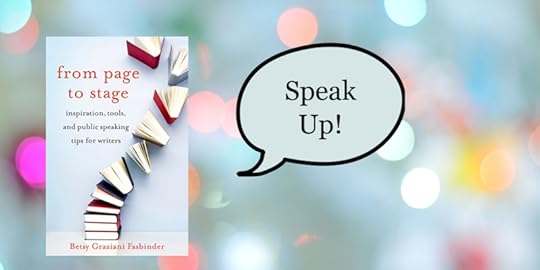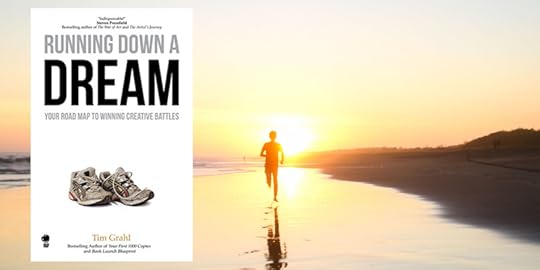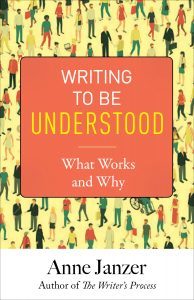Anne H. Janzer's Blog, page 26
September 9, 2018
Grit for Writers by Tamar Sloan [A Book Review]
 Short Version
Short Version
Grit for Writers by Tamar Sloan is a guide to cultivating your most important attribute as a writer: grit. If you find yourself discouraged, flagging, or in doubt, you’ll find support and solid advice here.
Grit for Writers is included the Write-Publish-Profit Superstack, available for sale September 10-14 only. Check out everything in the stack.
Long Version
Success in writing is a long game. It takes time to build the skills, bulk up the word count, and develop your craft. If you’re a published author, it takes sustained effort to find your audience and keep going in the face of discouragement.
That’s why I consider Angela Duckworth’s book Grit essential reading for writers. (Read my post on Two Books to Build Your Writing Resilience.) But if you haven’t gotten to it yet, you’re in luck.
Tamar Sloan has done an excellent job of applying the concepts from Duckworth’s book directly to the writer’s situation in Grit for Writers: Why Passion and Perseverance are the Keys to Your Writing Success. She packs a great deal of wisdom and advice into a short, readable volume.
As a practicing therapist and a skilled writer herself, Sloan supplements the psychological theory with practical suggestions for writers. She knows how to motivate and inspire people, and it shows.
Why We Need Grit
Grit, as Sloan defines it, is “the ability to stick with things that are important to you, through hell and high water, thick and thin, through thousands of words and hundreds of pages.” That definition works for me.
As a writer, you need grit to:
Get through repeated edits and revisions to improve your work
Listen to and learn from constructive criticism and thoughtful edits
Handle inevitable negative feedback, destructive criticism, and trolls without giving up
Focus on the audience (your purpose) and persevere when the path seems long
The book includes practical advice and exercises for developing your writerly grit. The section on mindset discusses topics like cultivating a growth mindset and focusing on your unique purpose. Writes Sloan, “Success for every writer will be truly diverse and deeply personal.”
A third section describes the behaviors that reinforce grit, including intentional practice, goal setting, and creating habits. Build these into your writing practice, and you’ll reinforce your long-term growth.
What I Particularly Love About the Book
As a cognitive science geek, I appreciate the psychological grounding for the book. Sloan describes the science without ever being dull. She puts this information into a specific, actionable context. She includes activities to try for every topic in the book. In personal profiles, other authors share their stories of persevering through tough situations.
Grit may be the most important attribute you can develop to serve your writing career, whether you’re trying to write the great American novel or crush it writing at work. Read this entertaining and inspiring book to build up your own grit and resilience, so you can weather the inevitable bumps in your writing road.
Until September 14, pick up Grit for Writers as one of the many writing and publishing resources in the Write-Publish-Profit Super Stack. Check out all of the other resources there.
The post Grit for Writers by Tamar Sloan [A Book Review] appeared first on Anne Janzer.
August 21, 2018
Don’t Wait for an Original Idea to Write
 Everyone wants to write something original. But that desire can keep us silent. Don’t let that happen to you.
Everyone wants to write something original. But that desire can keep us silent. Don’t let that happen to you.
When talking with people who want to write a book, I sometimes hear the following worry: I have nothing compelling or original to say.
This belief is based on two unfounded assumptions:
There’s no point in writing something that others have covered.
The original idea appears before the work of writing.
Let’s debunk those beliefs.
Originality is Overrated
It’s tough to dream up something that no one has expressed before. People who study plot lines can distill nearly every novel, movie, or play into one of a fixed number of formulas.
If audiences demanded originality, the Internet would go silent. Hollywood would come to a near-complete halt.
If your topic already appears in a book or blog post somewhere, work on it anyway.
Good ideas are worth repeating.
Maybe the person who reads your work hasn’t seen it elsewhere. Perhaps, when they encountered the idea, they weren’t ready to hear it. People often need to encounter ideas multiple times, from different perspectives, before they sink in. We learn through repetition.
If you write with your own voice to serve a specific audience, your writing will have value. Better yet, you may discover you have something compelling and unique to share.
What’s Your Angle?
You may not realize the unique contribution you can make to a subject until you tackle it.
In the excellent book The Myths of Creativity, David Burkus describes the Originality Myth as “the faulty belief that we would not have a given creation without its single creator and that the creator’s idea is wholly original.”
Creativity is the art of making connections between ideas or taking a fresh approach. You have to make the effort first.
The work of writing forces you to think deeply, to search for connections, and to bring your creativity into the process.
Originality arises from the struggle.
Are you holding back from writing a blog post, story, or book because someone has already done it? Approach the topic with an experimental mindset:
Change your perspective on the topic. Instead of writing about how things are done today, explore the history of the situation or what might change in the next year. If your topic is abstract, find personal stories that put it in a human context.
Write for a difference audience. If you are writing about a well-worn topic in your industry, consider addressing the needs of an outsider. This will shift your perspective.
If you want to share your ideas with the world, don’t worry about being first. Try to offer your reader something valuable. And start writing.
Related Posts
In a perfect illustration of this topic, I’ve written something very similar to this post: It’s Been Said Before, Write Anyway. And that blog post is based on something by Seth Godin. I practice what I preach.
If you’re writing for an audience of people outside your field, check out my latest book, Writing to Be Understood: What Works and Why.
The post Don’t Wait for an Original Idea to Write appeared first on Anne Janzer.
August 6, 2018
From Page to Stage: Speaking for Writers
 Short Version
Short VersionLike it or not, speaking is part of the author’s overall marketing toolbox. With her new book From Page to Stage, Betsy Graziani Fasbinder offers excellent advice for becoming a better advocate for your book, whether on the stage, at an in-person reading, or on a podcast interview.
Long Version: Why You Need This Book
In today’s publishing environment, authors of all types must speak up for their works. Resist the temptation to hide in your written words.
Now you’ve got a great guide in this new book from a coach who works with authors: From Page to Stage: Inspiration, Tools and Public Speaking Tips for Writers by Betsy Graziani Fasbinder.
The book makes a compelling case for why authors benefit from speaking in a variety of situations. When you are comfortable and effective speaking with others, you represent yourself and your work well, reaching potential readers and advocates. Showing up at events helps you connect with other authors. And as Fasbinder points out, writers can help or harm their causes by the way they speak.
A quick story reinforces this point. I first heard Betsy Graziani Fasbinder speak at the San Francisco Writer’s Conference in 2017, and was impressed with her expertise and approach. So when I heard that she had a new book coming out, I eagerly said that I’d review it – even though the book’s publication date is exactly two days before my own book’s publication date. Her effectiveness as a speaker earned my admiration and support.
This review is proof of her thesis that public speaking can help your book find its fans.
Fortunately, public speaking skills (like writing skills) can be learned and practiced. And Fasbinder is a terrific guide. As an author herself, as well as a coach who works with other authors and a certified psychotherapist, she knows whereof she speaks.
What’s In the Book
Whether you hope to speak at conferences or represent yourself well on podcast interviews, you’ll find plenty of guidance in this book. After convincing you of the need to speak and addressing any resistance you may feel, the book dives a comprehensive list of topics, including:
How to structure your content, with a story map and “spellbinders”
How to practice and prepare for your talk
Managing and tuning your delivery, including pacing, stance, and gestures
Handling audience interaction
Dealing with difficult people
Simply reading alone won’t make you better a speaker. You’ve got to try things out and learn from others. The book includes numerous suggestions to try, and directs you to specific online examples so you can figure out what the most effective speakers are doing.
What I Find Particularly Admirable
In addition to knowing her stuff, Fasbinder communicates effectively. She illustrates her story map method with a specific, memoir-related example, so it’s easy to see how abstract instructions translate to the real world. She shares personal anecdotes to prove her points, and offers exercises and mnemonics to help you master and remember her approach.
There are other books about public speaking skills. This one has the benefit of focusing specifically on writers. If you want to share your ideas and stories, don’t stop with the written word. Use this book to polish your spoken delivery as well.
The post From Page to Stage: Speaking for Writers appeared first on Anne Janzer.
August 5, 2018
On National Book Lover’s Day, Learn to Be a Better Writer
 What are you planning for National Book Lover’s Day this year?
What are you planning for National Book Lover’s Day this year?
Wait, you mean it isn’t on your calendar? August 9th?
Okay, I admit that I found National Book Lover’s Day through a Google search. In my family, every day is book lover’s day. We’re particularly entranced by great nonfiction books – histories, biographies, books about cognitive science or social trends; works that teach us about the world while entertaining or engaging us.
This year I’m celebrating the day by releasing my latest book, Writing to Be Understood: What Works and Why. I chose National Book Lover’s Day for the publication because the book is all about helping us become better nonfiction writers, which leads, inevitably, to more books to love.
In writing this book, I set out to explore what differentiates the most effective writers and explainers, so that we could all learn how to be more like them. I interviewed authors, psychologists, comedians, logical thinking experts, and more to get their takes on how to handle the challenges of nonfiction writing. Yes, researching it was a great deal of fun.
The book covers nonfiction writing techniques such as using analogies, storytelling, and imagery to engage audiences and explain abstract topics. The section on “How to Not Be Boring” includes balancing credibility with humility, using humor, and finding your personal tone and style.
Each topic includes a brief exploration of the cognitive science of what’s happening in the reader’s minds – the why behind effective writing techniques.
Book Launch Sale
In extra celebration of National Book Lover’s Day, the Kindle version is on sale for the next week, until August 17. Grab a copy now for $2.99.
That’s less than $3, or a “1” on the “iced latte” scale. (That’s also a thing in my household.)

The book is also available in paperback and hardcover, for the traditionalists, and on Amazon Kindle as well as assorted other ebook platforms (iBooks, Nook, Kobo, etc.)
Let’s get writing more great nonfiction books to celebrate.
The post On National Book Lover’s Day, Learn to Be a Better Writer appeared first on Anne Janzer.
July 24, 2018
A Ten-Minute Exercise to Improve Your Writing
 Do you want to be a better writer in the eyes of your readers? Consider investing ten minutes in a simple exercise.
Do you want to be a better writer in the eyes of your readers? Consider investing ten minutes in a simple exercise.
Although it may work for fiction, this one is designed for nonfiction writing. Try this for your next work-related or nonfiction writing project.
Begin with a clear idea of a specific reader you want to reach. If your audience is varied, choose one representative person.
Open an empty document, or pull out a plain sheet of paper – whatever way you can write most fluidly.
Set a timer for ten minutes.
In your mind, switch places with that reader and write yourself a note about the topic. Imagine any questions you might ask before and after reading the post/article/book. Keep searching for questions and ideas until the ten minutes are up.
As you fill the role of the reader, dig around for anything the reader might ask, if they had the time and inclination to be entirely honest.
For example, if you’re a marketer planning a blog post about a new feature, write yourself a note from a customer you hope to reach. By putting yourself in their shoes, you might uncover questions like:
Wait, I haven’t used the software for three months, so exactly where does this new feature show up?
I’m slammed until the end of the quarter. How much time will it take to learn this?
Is this feature designed for “power users” or people like me?
Is it worth my (limited) time to figure this out, or easier to keep doing what I’m doing now?
If you’re writing about science or technology, taking the reader’s perspective can uncover important issues such as:
Unfamiliar terminology
Connections between the science or technology and the reader’s life (relevance)
Subtle resistance to change
By spending ten minutes on this exercise before writing, you may discover potential objections or areas of confusion. With those insights in advance, you can write something that better meets your audience’s needs.
Why it Works: Cognitive Empathy
By writing a letter from another person’s voice, you temporarily inhabit their perspective – and that’s the essence of cognitive empathy.
You don’t need to “feel their pain” or have a deep emotional response their situation: that’s a different response (affective empathy). It’s enough to imagine their perspective.
You don’t learn cognitive empathy in most writing classes. You practice it in real life when interacting in with the people around you. But the reader isn’t there when you write, so make an effort to take their perspective.
The effort can be as simple as writing yourself a letter.
Invest 10 minutes at the start to have a lasting impact on your readers.
The Role of Cognitive Empathy in Writing
An earlier post (How to Write Stuff People Want to Read) discussed the importance of finding the intersection between what you want to write about and what others want to read.

To draw that diagram, you need to take the readers’ perspective. Cognitive empathy helps you figure out what to write about and how much to cover. But it informs other decisions as well, including:
Choosing examples that make sense to the readers
Identifying unfamiliar words that add to the readers’ cognitive load
Selecting effective stories or analogies
When writing, it’s easy to get caught up in our own words and ideas, and lose track of the reader’s perspective. Cognitive empathy is the cure.
If You Liked This…
Read more about empathy and communication in Alan Alda’s wonderful book, If I Understood You, Would I Have This Look on My Face. Read my review here.
Check out my latest book (on preorder): Writing to Be Understood: What Works and Why
The post A Ten-Minute Exercise to Improve Your Writing appeared first on Anne Janzer.
July 23, 2018
What Alan Alda Understands about Science Writing (and More)

Short Version
If I Understood You, Would I Have This Look on My Face? by Alan Alda is a terrific addition to your writer’s bookshelf. Although the book focuses on scientific communication, it holds valuable lessons for all nonfiction writers about effective communication. Oh, and it’s fun to read as well.
Long Version
What can Alan Alda teach you about better nonfiction writing? As it turns out, plenty. In addition to being an entertaining storyteller and effective writer, he offers a great deal of interesting research and solid advice in his book If I Understood You, Would I Have This Look on My Face?
Although he is best known for his acting skills, Alan Alda has dedicated years to the cause of improving scientific communication. This mission started with a gig he had hosting the PBS television series Scientific American Frontiers for eleven years. Doing this, he confronted the challenges of communicating effectively about scientific topics to a general television-viewing audience.
His passion for the subject comes through in the introduction: “People are dying because we can’t communicate in ways that allow us to understand one another.”
But the lessons in the book extend well beyond communicating about science.
Reasons to Read – Even If You’re Not a Scientist
The book’s cover, title, and subtitle set certain expectations.
The cover image suggests that you’ll hear plenty of Alda’s voice and personal style.
The title hints at self-deprecating humor.
The subtitle, My Adventures in the Art and Science of Relating and Communicating, promises a combination of story and science.
The book doesn’t disappoint – and in fact, exceeds expectations on all fronts.
It turns out that in addition to being a talented actor, Alda is no slouch as a writer, full of wit and intelligence. He writes with great commitment and an underlying, self-deprecating sense of humor that is consistent with his on-screen persona. (Not the villains, mind you.)
The Unexpected Pleasures
What I didn’t realize was the depth Alda’s commitment to communication and the science behind it.
Alda has lent his name to the Alan Alda Center for Communicating Science at Stony Brook University in New York. The center conducts training and research in into scientific and medical communication. He and the team at the Alda Center devised the Alda Method™ for Science Communication based on the practices of improvisation to train scientists and others to communicate more effectively.
Why improvisation, you might ask? Because improvisation builds empathy with the other person – the listener, the reader, or whoever you want to reach. And empathy makes you a better communicator.
Writes Alda, “Developing empathy and learning to recognize what the other person is thinking are both essential to good communication.”
The depth of research in the book was a pleasant surprise. It’s a terrific source of research on communication, as well as the work of the Alda Institute for Communicating Science. It’s been a jumping off point for my own research into nonfiction writing techniques.
Why It’s on My ‘Books for Writers’ List
Much of the book deals with in-person communications about difficult topics. (Alda opens with a miscommunication between himself and a dentist that had long-lasting effects.)
Yet the general practices and concepts apply to writers as well. Empathizing with our readers makes us more effective communicators. As writers, we must challenge ourselves to imagine the perspective of readers with different backgrounds and perspectives. Alda writes: “An essay can become a dynamic conversation with the self. It has the chance of being a little less didactic, less like the tiresome uncle at the Thanksgiving table who has the answer to his own questions and doesn’t consider the possibility of opposing thoughts.”
If you communicate about scientific, technical, or abstract topic, I’d suggest you read this book.
Enter for a Chance to Win This Book
If I Understood You… is part of an 8-book Nonfiction Writer’s Bookshelf giveaway, ending August 5.
Related Book Reviews
How We Learn by Benedict Carey
The post What Alan Alda Understands about Science Writing (and More) appeared first on Anne Janzer.
July 10, 2018
How to Write Stuff People Want to Read

Finding the Sweet Spot for your Next Nonfiction Writing Project
As a thought exercise, take a current writing project you have in front of you – whether that’s a blog post, an article, a book, a memo. It could be nearly anything.
Make a list of all the things you want to get across in this piece of writing:
What do you want to write about?
What stories, data, or ideas do you want or need to share?
What’s important to you to communicate?
Now, make another list. Given the reader you’re trying to reach:
What are they looking for when they find your writing?
What do they enjoy reading or find valuable?
What might interest them or catch their attention?
If you could chart them into a Venn Diagram – where’s the overlap? That’s your sweet spot.

The common ground between your interests and your readers is your starting point.
Maybe you think that everyone is interested in everything you have to say. If that’s the case – well, congratulations. You must have a fascinating topic or an exceedingly narrow audience.
Or, perhaps, you’re mistaken about that amount of overlap.

The list of people who share your exact enthusiasms may be smaller than you imagine. In reality, many people only care about a subset of your idea subject – the bits that apply to them.
A more realistics Venn diagram might look like this:

That’s good to know ahead of time.
What to do with this information
You have a few options:
Restrict yourself to writing about the small part that meets the readers’ known needs. It may not be rewarding or fulfilling, but you’ll probably find an audience.
Go ahead and write what you want to write, without regard for the readers. Of course, you risk obscurity, but it might feel good.
Start with the overlap and then entice readers to become curious about the subject and share your enthusiasm. Earn their attention and expand that sweet spot.
The last one is much tougher to do, but can be a lot of fun. That’s where the skill, creativity, and craft of nonfiction writing comes into play.
Just make sure you know where to start.
Further Reading
This blog is based on my upcoming book Writing to Be Understood: What Works and Why.
The post How to Write Stuff People Want to Read appeared first on Anne Janzer.
July 7, 2018
Running Down a Dream by Tim Grahl [Review]

Short Version
In this generous and courageous book, Tim Grahl demonstrates why being creative is much more than simply corralling good ideas and how to prevent the corrosive effects of fear and resistance.
Long Version
In case you’re not familiar with him, Tim Grahl is book marketing expert. I’ve followed him for some time, having taken a couple of online courses from him, subscribed to his blog posts, and bought and read his books. He even provided a book blurb for The Writer’s Process. He is consistently generous with his knowledge and experience.
In his latest book, Running Down a Dream: Your Road Map to Winning Creative Battles, he expresses a different kind of generosity by sharing his personal experiences.
This book is the antidote to blog posts that promise “Do these three things before breakfast to be a more creative or productive person!” Running Down a Dream describes the hard parts of a creative or entrepreneurial life. You may not want to hear it, but when you run into the parallels in your own life, Tim’s advice will be valuable.
The Personal and the Universal
Running Down a Dream is the tale of Tim starting his business, writing his books, and facing his demons along the way. It’s a compelling story. As someone who has followed Tim for a few years, I was unaware of this internal side of his struggle – and that’s exactly the point.
While the details are unique to his experience, this is also a universal story – an allegory of the risks of both creativity and entrepreneurship. Tim is the allegorical “Everyman” as he faces down Resistance with a capital R – the force that Steven Pressfield writes so compellingly about in his work The War of Art.
Running Down a Dream offers a first-hand look into the the various kinds of doubt and dismay that often derail writers, entrepreneurs, creative types – almost anyone who attempts to craft a more intentional and creative life.
Resistance may not appear exactly the same way in your life or mine as it did in Tim’s. We have our own paths to travel, but everyone encounters Resistance at one point or another. We can learn much from those who are brave and honest enough to share their inner journeys.
Practical Advice
While it’s inherently an inspirational book, I don’t think that Tim Grahl can write anything without being practical and helpful. Small nuggets of wisdom appear throughout, like this one: “Only ask advice from experts on things they are experts on.”
As he recounts his tale, he shares a number of “tools” to help those who follow a similar path. These include:
Creating systems and, for longer processes, checklists. (As a “process” geek, I approve!)
Cutting out the nonessential tasks
Proactively seeking rejection
Inhabiting an experimental mindset toward your work
Choosing your mentors with care
This book offers inspiration for shifting your mindset about fear and working through inevitable difficulties. A creative life isn’t a sprint, but a marathon. As he writes at the beginning of the book, “Success is inevitable if you keep moving.”
Lace up and get going.
Related Posts/Book Reviews
Two Books to Build Your Writing Resilience
Perennial Seller: A Book Review
The post Running Down a Dream by Tim Grahl [Review] appeared first on Anne Janzer.
June 28, 2018
Preparing for the Podcast (Part Two of the Author’s Guide)
 This is the second in a three-part series of posts about being a podcast guest. Read the first one here.
This is the second in a three-part series of posts about being a podcast guest. Read the first one here.
Congratulations! You’ve landed a podcast interview to talk about the subject of your book. What do you do next?
Prepare. Here’s my personal preparation time line.
Immediately
I like to take notes and assemble my research for a podcast as soon as it’s confirmed, even if the interview itself won’t take place for weeks.
Why? Because then I remember why I wanted to be on this podcast!
If you researched the audience, subject and reach ahead of time, it’s fresh in your mind. Assemble a file right away. Here are a few things to include in your notes.
Audience information. If you followed the advice in the first post, then you looked into podcast’s topic, audience, tone, etc. Keep those notes. And if the podcast listeners are outside your usual audience, do a bit of thinking now on what might interest them.
Host instructions. Douglas Burdett hosts the Marketing Book Podcast – you’ll hear more from him later in this series. He goes out of his way to be thorough in helping his guests be successful, offering detailed written and video instructions. He maintains high standards for his podcast (and is a fabulous host), and as a result, it has a loyal and growing following.
(Watch the video he offers his guests here.) This is one reason his listeners love his podcast.
If the host offers instructions, do them the courtesy of reading them, printing them, and following them. If the host doesn’t offer guidance, the notes that follow should help you prepare.
Standard questions. Some podcast hosts open or close each episode with a signature question. You should have noticed that when you did the research (see part one in this series). If not, make a note of it now. There’s nothing more awkward than being caught flat-footed by a question that the listeners have heard a dozen times. Listeners (and the host) might interpret it as being disrespectful.
Technical details. How will the interview take place? Over Skype? Zoom? On a phone call? Make a note of it now, because you may not remember weeks from now. If the interview will take place over Skype or Zoom, make sure you have equipment that can work. Schedule access to a quiet place with high speed internet. (If you’re traveling, this may require advance planning.)
Also, get a good headphone. It doesn’t have to be expensive. You’ll need a headphones with built-in noise cancelling, dynamic microphone, and USB connection. (Your fancy Blue Yeti or other condenser microphone only sounds great if you are in a perfectly quiet environment, because it’s designed to pick up all kinds of noises.)
Douglas Burdett (of the Marketing Book Podcast) recommends the Logitech H390 Comfort noise-cancelling headset – about $25. Seriously. Think of it as an investment in your personal brand. As Douglas says, “Your credibility will take a hit if you don’t sound good.”
A few weeks before the interview….
Send the host everything they will need to promote the podcast once it’s done. Do this well ahead of time – then the host won’t have to bug you for it later. (Nobody likes hounding people.) Here’s what you should send:
Headshot (a professional-looking one)
Short bio
Introduction – something that the host can read to introduce you, tailored for their audience
Book cover image – you do want people to know about your book, right? Send the cover image.
Links to your author website, Amazon page, whatever you want to share with listeners.
If you plan to do a lot of podcast guesting, put this on a page on your author website and then you can just send the link to podcasters. They will appreciate it.
One week before the podcast interview
Confirm the time. If you haven’t heard from the host since you first scheduled, send a quick email confirming that it’s still on the schedule. Stuff happens, and you don’t want to spend time preparing for an interview that doesn’t take place.
Send some talking points (if the host has not sent you questions or topics). Some podcast hosts do extensive research (like, reading your book!) Most don’t. Draft some discussion topics or questions that the host might ask you, and share them. Volunteering possible discussion areas helps the host frame interesting questions that will appeal to the listeners, so you both sound smart from the start.
A day or two before the podcast interview
Make notes about the topic areas. Review your talking points and take a few notes. I don’t usually use them, but they offer a lovely sense of security when the day arrives.
Practice talking aloud about your subject. You may feel goofy doing so, but it’s important. Otherwise, you might run right into the illusion of fluency.
If you simply “think” through the discussion points, you’ll sound brilliant and witty in your own head. We all do – it’s like singing in the shower.
But when you try to form those vivid thoughts into spoken words, particularly on the air with other people, you can end up tongue-tied. That’s the illusion of fluency. Please, practice ahead of time.
Draft a few tweets. Write down a few pithy takeaways or tweetable points. You might be able to slip them into the conversation in a way that sounds natural. That gives the host something to highlight in the show notes, or to tweet. You’re making it easier for them to share.
Test the technical details. If the interview will take place on Skype, log into your account. Make sure everything works, and you remember your password, etc. If it will use other software like Zoom, download the client and test it out. Make sure everything works. You don’t want to be caught by surprise at the last moment.
30 to 15 minutes before the interview
Phones, doorbells, dogs, babies. Find a way to avoid all of the noise-makers in your life that might interrupt the interview or distract your attention. Silence the phone, shut down other tabs, and basically try to create a quiet space. Make sure people around you know not to interrupt.
Do you plan to do the call while driving a car or sitting in the airport? Not cool. It will sound terrible to the listener.
Necessities. Get a drink of water. Print out your talking points if you want them nearby. (Again, security.)
Energize and relax. Listeners don’t want to feel your nerves. So try to find that balance of relaxed and energized. Do some jumping jacks. Stand in a power pose, like superman. Listen to upbeat music.
You can relax and sound brilliant – because you’ve prepared!
Ready? In the next post, we’ll discuss what to do during and after the podcast. Hint: the “after” part may just be the most important bit.
The post Preparing for the Podcast (Part Two of the Author’s Guide) appeared first on Anne Janzer.
June 26, 2018
Better than the Last One
 When is something truly finished?
When is something truly finished?You’ve written a blog post, or an article. How good does it have to be before you hit the publish or send button?
Do you get stuck in revision, polishing the words or rethinking your approach? Doubting yourself?
Putting your words out into the world can be frightening. Perfectionism makes a handy shield.
The trick for writers is finding that sweet spot between perfectionism and impatience – finding your personal “good enough.”
Good enough is a moving target.
I want to keep working on my craft, becoming better as a writer.
Whenever I open up something I wrote a while ago (or even last week), I can spot several possibilities for improving it:
A simpler sentence structure
A stronger verb
A better analogy
So really, I’ve published things that I would now improve. I’m never really done, because my good enough is a sliding scale.
Revision is your friend, until it simply becomes a delaying tactic.
Your writing is never perfect.
At some point, you want people to read and benefit from your words. You have to let them go, imperfect as they are.
Perfection is overrated. Even committing to doing your “best” may be seen as a way to avoid doing anything at all. Here’s a more achievable, yet still worthy, goal:
Do something better than your last one
Better doesn’t have to be perfect – but strive for improvement in those areas that you can control.
Write a better title for this blog post than the last post.
Search out a boring adjective (like big or new) and pick a stronger one.
Experiment with telling a quick story, or using an analogy to explain something.
Do something to work on your craft, to elevate your output. Then let it go and see what happens.
Give yourself permission to be just a bit better today than you were yesterday.
Over time, your writing will improve. Along the way, you’ll be reaching other people with your writing. And that’s what it’s all about.
The post Better than the Last One appeared first on Anne Janzer.








